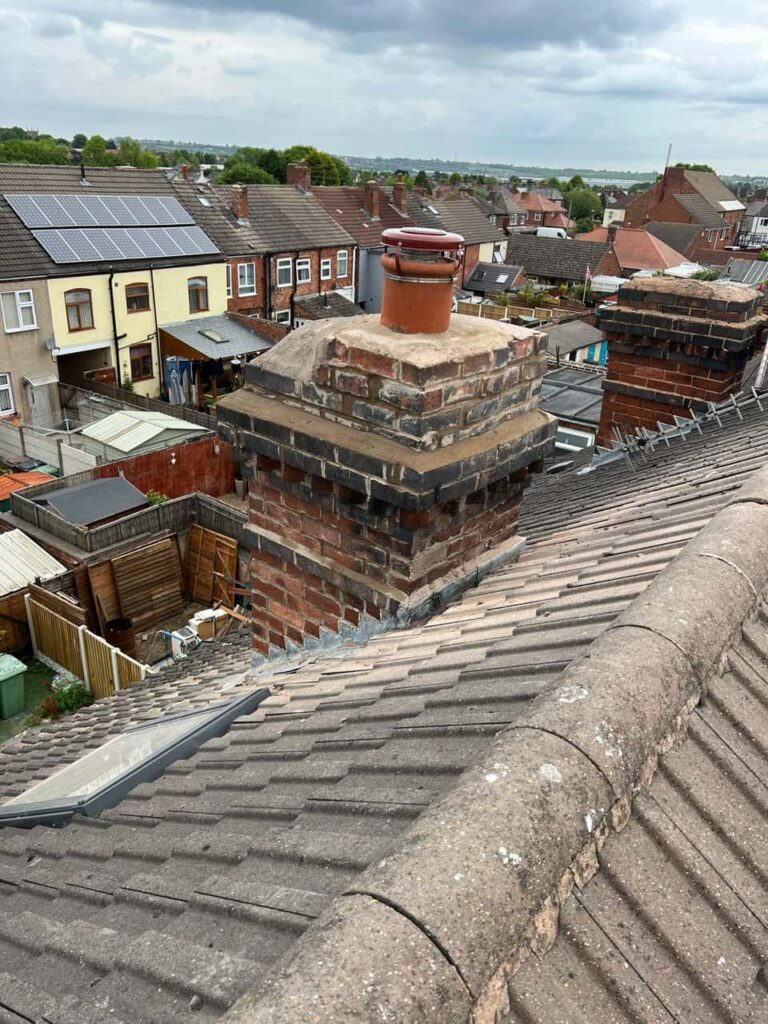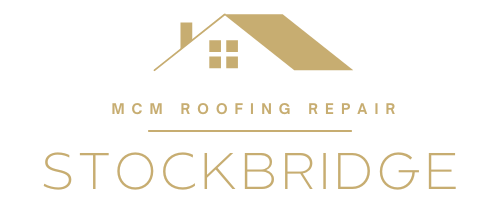Chimneys are an integral part of many UK homes, particularly in older properties, and ensuring they remain weatherproof is crucial to maintaining the integrity of your roof. Lead flashing is one of the most effective materials for sealing the area where the chimney meets the roof, providing long-lasting protection against leaks and water damage. At MCM Roofing Repairs Stockbridge, we offer professional roofing services, including the installation and repair of lead flashing for chimneys in Stockbridge, Hampshire. In this post, we’ll explore what lead flashing is, why it’s essential, and how it can protect your chimney and roof.
What is Lead Flashing?
Lead flashing is a material used to create a waterproof seal between roof surfaces and features such as chimneys, roof vents, or skylights. In the case of chimneys, lead flashing is installed at the point where the chimney stack meets the roof to prevent water from seeping into the gap. Lead is favoured for this purpose due to its durability, malleability, and resistance to corrosion, making it an ideal choice for areas exposed to the elements.
Why Lead Flashing is Important for Chimneys
- Waterproof Protection Chimneys are a common entry point for water into your home. Without proper flashing, rainwater can seep into the roof structure, leading to leaks, damp patches, and even structural damage over time. Lead flashing creates a waterproof barrier, ensuring that water is directed away from the vulnerable joint where the chimney and roof meet.
- Durability and Longevity Lead is an incredibly durable material, often lasting for decades with minimal maintenance. Its longevity makes it a cost-effective solution for homeowners who want long-term protection for their roofs and chimneys. Unlike other materials, lead can withstand the harsh British weather, including heavy rain, frost, and high winds, without degrading.
- Malleability One of the key advantages of lead flashing is its malleability. It can be easily shaped and moulded to fit around the contours of the chimney and roof, ensuring a snug and secure fit. This flexibility allows lead flashing to adapt to the unique dimensions of any chimney, providing superior protection against water ingress.
- Weather Resistance Lead flashing is highly resistant to the effects of weather. Unlike materials that may crack, warp, or become brittle over time, lead remains flexible and resilient, making it ideal for chimneys that are constantly exposed to changing temperatures and weather conditions. This resistance ensures that your roof remains watertight, even during extreme weather.
Signs Your Lead Flashing May Need Repair
Although lead flashing is highly durable, it is still important to regularly inspect it for any signs of wear or damage. If left unchecked, damaged flashing can lead to costly repairs. Here are some common signs that your lead flashing may need attention:
- Cracks or Splits: Over time, lead flashing can develop cracks due to thermal expansion and contraction. These cracks can allow water to seep through, leading to leaks.
- Loose or Dislodged Flashing: High winds or physical damage can cause flashing to come loose or shift out of place. If you notice gaps between the flashing and chimney, it’s time to call a professional.
- Rust or Corrosion: While lead itself doesn’t rust, the fasteners or surrounding materials may corrode, compromising the integrity of the flashing.
- Water Stains or Damp Patches: If you notice damp spots or water stains around your chimney inside your home, it could be a sign that the flashing has failed and water is entering through the roof.
The Process of Installing or Repairing Lead Flashing
At MCM Roofing Repairs Stockbridge, we use a professional approach to installing or repairing lead flashing to ensure the highest quality of work. Here’s what you can expect during the process:
- Inspection: We’ll conduct a thorough inspection of your roof and chimney to assess the condition of the existing flashing and identify any areas that need attention.
- Removal of Damaged Flashing: If the flashing is damaged, we’ll carefully remove it without causing further damage to the roof or chimney.
- Installation of New Lead Flashing: We’ll measure, cut, and shape the lead to ensure a perfect fit around the chimney and roof surface. The lead is then secured in place, providing a watertight seal.
- Final Checks: After installation, we’ll check the flashing for any gaps or imperfections to ensure that your chimney is fully protected from water ingress.
Conclusion
Lead flashing is a critical component in maintaining the integrity of your roof and chimney. Its waterproofing capabilities, durability, and weather resistance make it the ideal material for protecting your home from leaks and water damage. At MCM Roofing Repairs Stockbridge, we specialise in the installation, repair, and maintenance of lead flashing for chimneys, ensuring your home is safeguarded against the elements.
Call us on: 01794 337 497
Click here to find out more about MCM Roofing Repairs Stockbridge
Click here to complete our contact form and see how we can help with your roofing needs.

